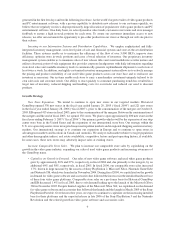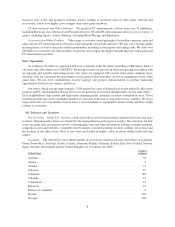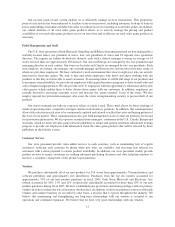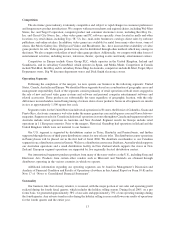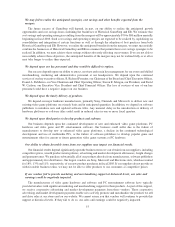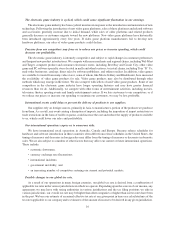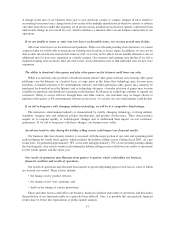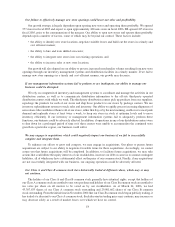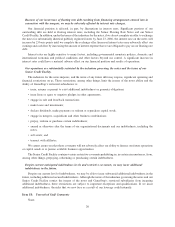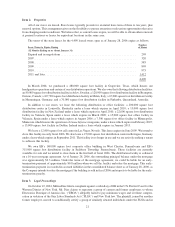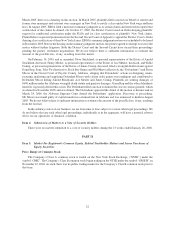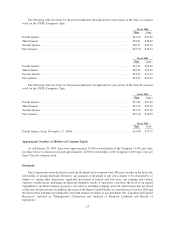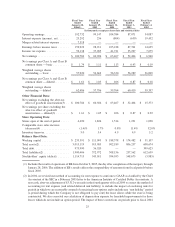GameStop 2005 Annual Report Download - page 25
Download and view the complete annual report
Please find page 25 of the 2005 GameStop annual report below. You can navigate through the pages in the report by either clicking on the pages listed below, or by using the keyword search tool below to find specific information within the annual report.The electronic game industry is cyclical, which could cause significant fluctuation in our earnings.
The electronic game industry has been cyclical in nature in response to the introduction and maturation of new
technology. Following the introduction of new video game platforms, sales of these platforms and related software
and accessories generally increase due to initial demand, while sales of older platforms and related products
generally decrease as customers migrate toward the new platforms. New video game platforms have historically
been introduced approximately every five years. If video game platform manufacturers fail to develop new
hardware platforms, our sales of video game products could decline.
Pressure from our competitors may force us to reduce our prices or increase spending, which could
decrease our profitability.
The electronic game industry is intensely competitive and subject to rapid changes in consumer preferences
and frequent new product introductions. We compete with mass merchants and regional chains, including Wal-Mart
and Target; computer product and consumer electronics stores, including Best Buy and Circuit City; other video
game and PC software specialty stores located in malls and other locations; toy retail chains, including Toys “R” Us;
mail-order businesses; catalogs; direct sales by software publishers; and online retailers. In addition, video games
are available for rental from many video stores, some of whom, like Movie Gallery and Blockbuster, have increased
the availability of video game products for sale. Video game products may also be distributed through other
methods which may emerge in the future. We also compete with sellers of used video game products. Some of our
competitors in the electronic game industry have longer operating histories and may have greater financial
resources than we do. Additionally, we compete with other forms of entertainment activities, including movies,
television, theater, sporting events and family entertainment centers. If we lose customers to our competitors, or if
we reduce our prices or increase our spending to maintain our customers, we may be less profitable.
International events could delay or prevent the delivery of products to our suppliers.
Our suppliers rely on foreign sources, primarily in Asia, to manufacture a portion of the products we purchase
from them. As a result, any event causing a disruption of imports, including the imposition of import restrictions or
trade restrictions in the form of tariffs or quotas, could increase the cost and reduce the supply of products available
to us, which could lower our sales and profitability.
Our international operations expose us to numerous risks.
We have international retail operations in Australia, Canada and Europe. Because release schedules for
hardware and software introduction in these countries often differ from release schedules in the United States, the
timing of increases and decreases in foreign sales may differ from the timing of increases or decreases in domestic
sales. We are also subject to a number of other factors that may affect our current or future international operations.
These include:
• economic downturns;
• currency exchange rate fluctuations;
• international incidents;
• government instability; and
• an increasing number of competitors entering our current and potential markets.
Possible changes in our global tax rate.
As a result of our operations in many foreign countries, our global tax rate is derived from a combination of
applicable tax rates in the various jurisdictions in which we operate. Depending upon the sources of our income, any
agreements we may have with taxing authorities in various jurisdictions and the tax filing positions we take in
various jurisdictions, our overall tax rate may be higher than other companies or higher than our tax rates have been
in the past. We base our estimate of an annual effective tax rate at any given point in time on a calculated mix of the
tax rates applicable to our company and to estimates of the amount of income to be derived in any given jurisdiction.
16


